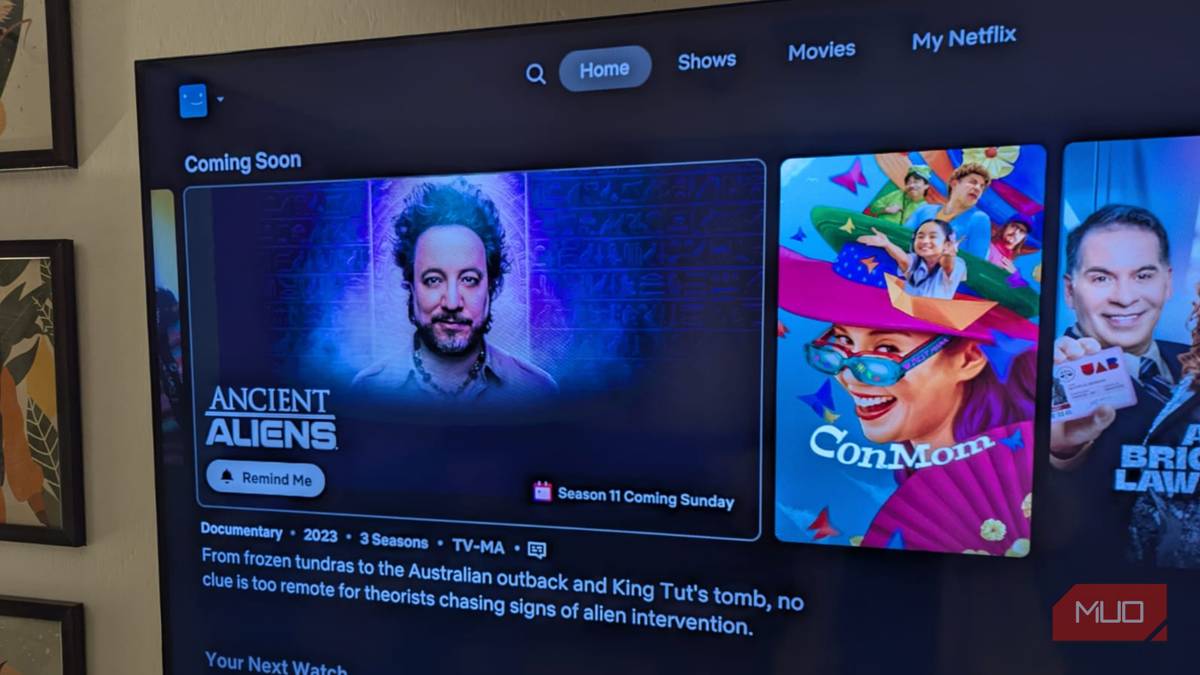Call me lazy, but after over a decade of using smart televisions, I’ve never once tried using a VPN. Yes, I’ve seen the VPN ads pop up on Screen Rant videos, and yes, I have GlobalProtect installed on my laptop for sensitive transactions, just in case. However, given the massive streaming library already available in our country, it never occurred to me that I might be missing out — until last week.
Binge-watching Friends for the 117th time on Netflix India, I wanted to rewatch How I Met Your Mother next, but that’d mean installing another streaming platform, setting up another account, and, of course, signing up for yet another monthly subscription. This seemed like the perfect opportunity to try a VPN. After weighing the cost and effort it’d take to install a VPN on my cheap smart TV vs. configuring another OTT account, I chose the former — and now there’s no going back (even though I faced a few unexpected hiccups).
Choosing the best VPN for my smart TV
Installing Proton VPN
If you’re new to virtual private networks or VPN, it’s a networking software that helps you route internet traffic via a location different from your own. VPN providers have servers worldwide (well, in most major countries), and once turned on, a VPN effectively makes it look like you’re logging in from a different country.
This has many uses (e.g., masking your location during a financial transaction so you can’t be monitored), but today, my goal was to find the right VPN that would unlock location-specific streaming libraries on my smart TV. My criteria were simple: it had to work with Netflix and YouTube, and it had to be either free or offer a credit card-free trial. I’d heard good things about Proton’s services, like Proton Drive, so Proton VPN seemed like a wise choice.
The installation process for Proton VPN is surprisingly intuitive, taking less than three minutes in total (download and install). Once it’s up and running, it prompts the user to log in from their mobile device or computer via an 8-character code. There’s no option to scan a QR code using your phone camera, but I appreciated the 35-minute delay it offers before the login code expires.
After you open Proton on your phone or computer, things are pretty straightforward. A sign-up prompt appears, nudging the user to get a paid account; choose the sign-up for free option on the bottom right to create an account using your email ID (no Google sign-up option).
Once your account is active, the smart TV changes to a world map, with a list of all the available VPN server locations. Some of these are locked for free users, but for streaming purposes, several servers in the US, UK, Japan, South Korea, and other regions are readily available. After selecting a server, a security pop-up appears; click OK to proceed.
Make sure you consult the various streaming platforms’ terms of service. Using a VPN may violate the TOS and result in being blocked or restricted.
The streaming experience on Netflix
Netflix speeds unaffected with Proton VPN
Right off the bat, I noticed that connectivity speeds were unaffected by the VPN, and my Realme TV was just as snappy as ever. Netflix is the primary platform I use for streaming, followed by Amazon Prime and YouTube. The Netflix user experience is nearly identical across countries, so you won’t notice any major difference after logging in with a VPN.
However, the “Top Shows in Your Area” will switch to whichever server location you choose, and, of course, additional content in Netflix’s country-specific catalog will now be available for viewing. For me, this meant a treasure trove of comfort television and action franchises.
For example, Netflix India only has the fourth and fifth Mission Impossible movies, while Netflix US has the first five movies. The same goes for The Equalizer and several other beloved franchises. You’ll also find comfort shows like How I Met Your Mother and Gilmore Girls. I was surprised to see that Netflix US even has Ancient Aliens.
Of course, Netflix doesn’t stream every show you might want to watch, but by switching VPN server locations across the UK, US, Japan, and South Korea, users can unlock a massive variety of hidden movies on Netflix (and TV shows) at literally no cost.
(Re)Discovering YouTube
Another goldmine when streaming with a VPN
In the US specifically, the platform offers an extensive Movies & TV section that’s fully free to watch with ads, containing over 4,000 TV episodes and 1,500 movies. This library isn’t available in most other countries, including India. With a VPN running on my smart TV, YouTube had no trouble accessing this library, comprising mainly comedy, action, and thriller blockbusters from the 90s and 2000s. You could spend days combing through YouTube’s genre flicks, all available for free, and there is a lot of children’s content too, if that matters to you.
Smart TV + free VPN
A game-changer, with caveats
While it feels slightly petty to nitpick over what’s truly an eye-opening experience, it should be noted that not all platforms work with a VPN. Amazon Prime, for instance, locked its country-specific catalog when it detected a VPN running on my smart TV. Newer shows and movies still need to be rented/purchased on YouTube with no free viewing option. And while the Play Store on my TV started showing US-specific apps (e.g., Fox ONE), most of the content is locked.
That said, installing a VPN on a smart TV makes a whole lot of practical sense. It costs nothing (or next to nothing, for most entry-level paid VPNs), it doesn’t slow down your connection, and with the right platform and country combination, you’ll probably find what you’re looking for regardless of your location.
It’s truly a brave new world of streaming.














